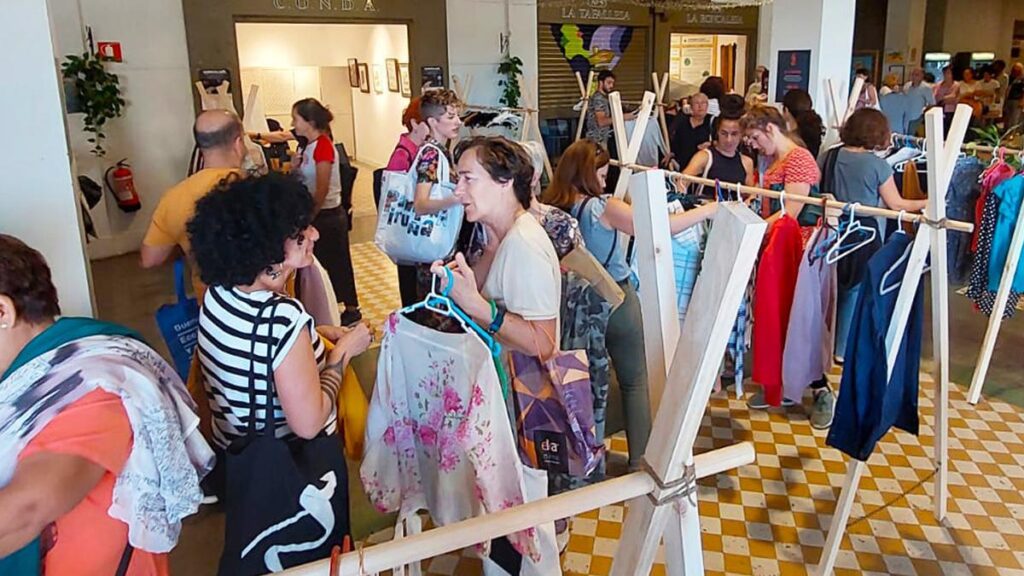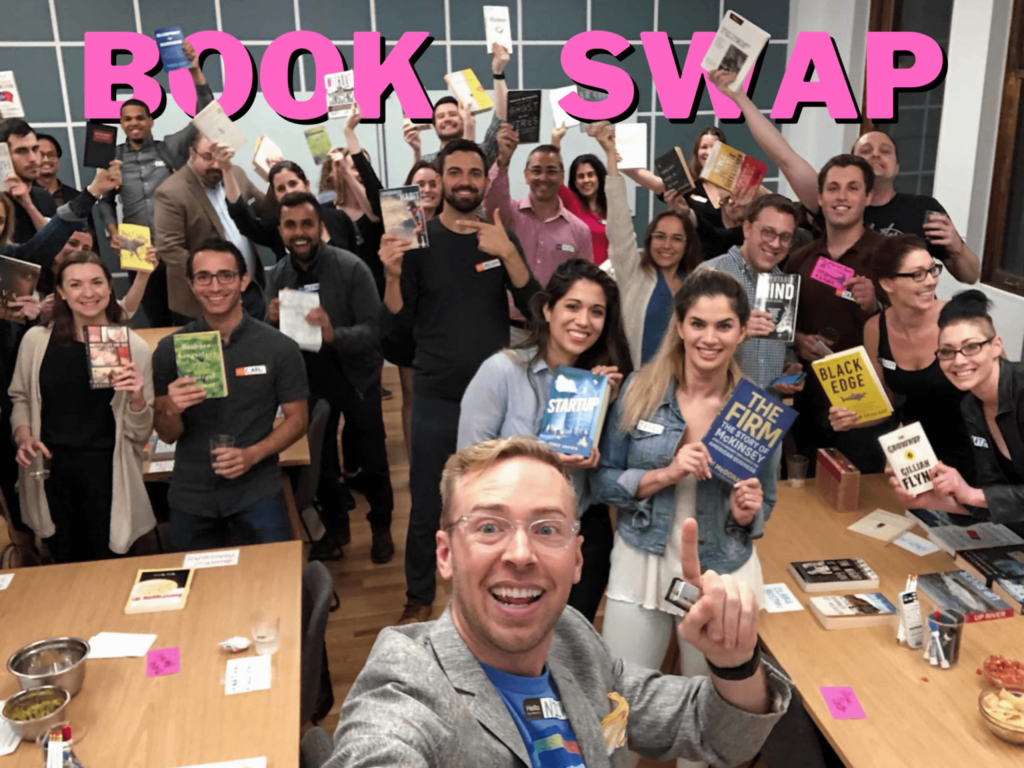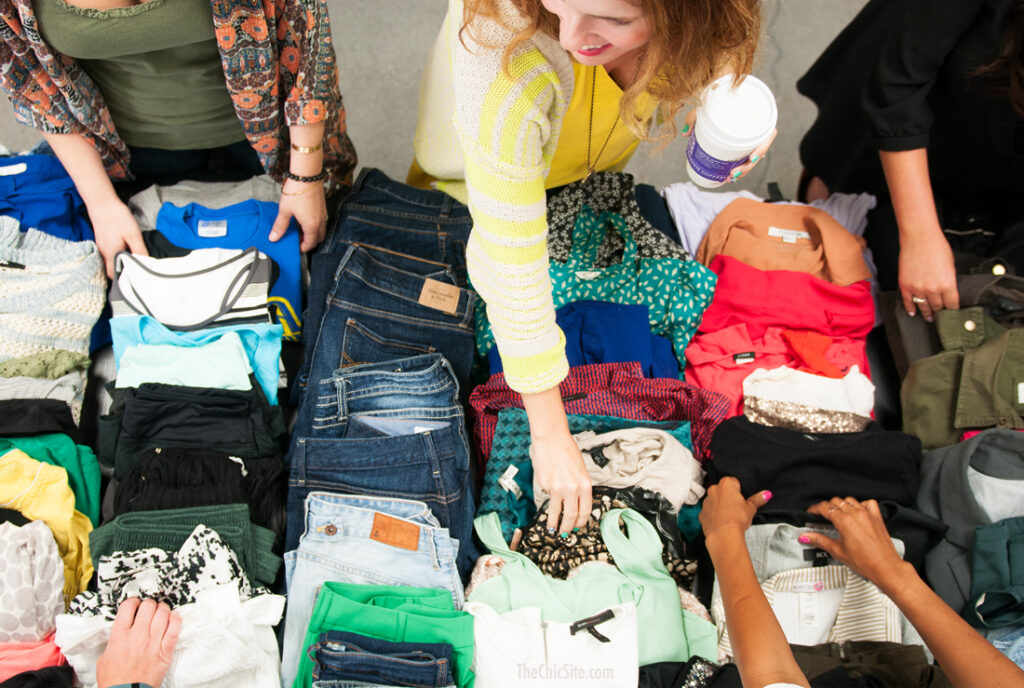Over the last few years, the fashion industry has changed significantly, prompted by the growing consciousness about the environmental and social impact of the industry. In this context, swap parties have emerged as an innovative and sustainable alternative for clothing consumption. They represent an effective way to promote more sustainable clothing consumption. Through these swap parties, people can discover innovative alternatives that reduce the environmental impact of fashion.

What Swap Parties are?
Swap parties are social events where people meet to swap clothes, accessories and other items. The idea behind these parties is quite simple: you bring clothes you no longer wear and, in exchange, you can find new ‘old’ wonders that can renew your wardrobe without spending a penny. This makes swap parties an innovative and sustainable alternative for clothing consumption.
Not only is the concept practical; it is also deeply ethical. Swap parties are about sharing and reuse, thus reducing the demand for new products and contributing to more responsible consumption. Swap parties represent an innovative and sustainable alternative for clothing consumption.

The Benefits of Swap Parties
Environmental Sustainability
The fashion industry is a major polluter in the world, accounting for huge amounts of waste and CO2 emissions. Swap parties are a way to combat this environmental crisis. Through participation in these events, people can give clothes a second life, thus reducing the need to produce new items and helping to decrease the overall ecological impact. Swap parties represent an innovative and sustainable alternative for clothing consumption.

Kevin McElvaney/Greenpeace.
Economical Savings
Clothing swapping is a great solution for anyone wishing to renew their wardrobe without emptying their wallet. With inflation and everyday expenses weighing heavily on the finances of most, swap parties offer a fun and inexpensive way to get new clothes. Swap parties therefore represent an innovative and sustainable alternative for clothing consumption.
Socialisation and Community Building
Swap parties are not just swap events; they are also an opportunity to socialise and make new connections. By attending these parties, one can meet people with similar interests, strengthening a sense of community and promoting a more collaborative lifestyle.

Creativity and Originality
In a swap party, discovering unique garments is a stimulating experience. Participants enjoy mixing and matching clothes, creating original and personal styles that they would not find in a traditional shop. Once again, we see how swap parties represent an innovative, fun and sustainable alternative for clothing consumption.
Swap Parties examples around the World
Local Initiatives
In the US, many cities host swap parties regularly. For example, New York City has witnessed a growing number of events organised by green activist groups and local community groups. These events often include workshops on how to repair and customise clothes, further expanding the idea of reuse.
Themed Events
In Europe, themed swap parties have been growing in popularity. A few events focus on specific types of clothing, such as vintage clothes, children’s fashion or accessories. These initiatives not only attract a targeted audience, but also encourage the reuse of items that otherwise might end up in landfills.

Festivals and Fairs
Some fashion and sustainability festivals, such as the ‘FASHION REVOLUTION WEEK’, include swap parties as part of their programming. These events not only promote sustainable fashion, but also provide space for discussions on how the fashion industry can evolve towards more ethical practices.
Online Swap
The advent of technology has meant that swap parties have also adapted to the digital world. Online platforms such as ‘Swap Society’ and ‘Vinted’ allow people to swap clothes without having to move. These platforms extend the reach of swaps, making them accessible to a global audience.

The Importance of Education
Educating participants on the importance of reuse and recycling is crucial to ensure the success of swap parties and other sustainable consumption initiatives. The organisations which promote these activities often offer information on how to take care of clothes and how to recognise quality garments.
Furthermore, it is important to promote a change of mentality towards fashion. ‘Fast fashion’ has made consumers accustomed to quick and unthinking shopping. Swap parties offer an opportunity to reconsider this approach, encouraging greater awareness and slower, more responsible consumption.
Swap Party Challenges
Despite their many benefits, swap parties have their challenges. Organising the logistics of an event can be complex and requires commitment and planning. In addition, there is the risk that some participants bring clothes of poor quality or in unacceptable condition, which can compromise the experience for others.
How to Overcome the Challenges
It is useful to establish some guidelines before the event to deal with these challenges. This can include asking participants to bring only clothes in good condition and setting a limit on the number of items to be exchanged. This will help preserve the quality of the exchanged clothes and ensure a positive experience for all.

Conclusions
Swap parties are a creative and sustainable response to the fashion crisis. They offer a way to renew one’s wardrobe without contributing to the over-exploitation of resources. These events not only help the environment, but also promote values of community, creativity and responsibility.
With the rise of awareness about the importance of sustainability, swap parties are likely to keep gaining popularity. Being local events or online initiatives, the future of sustainable fashion looks promising, thanks to these new forms of collective consumption. In a world that is becoming increasingly ecologically oriented, swap parties can be a significant step towards positive change. Swap parties represent an innovative and sustainable alternative for clothing consumption.





